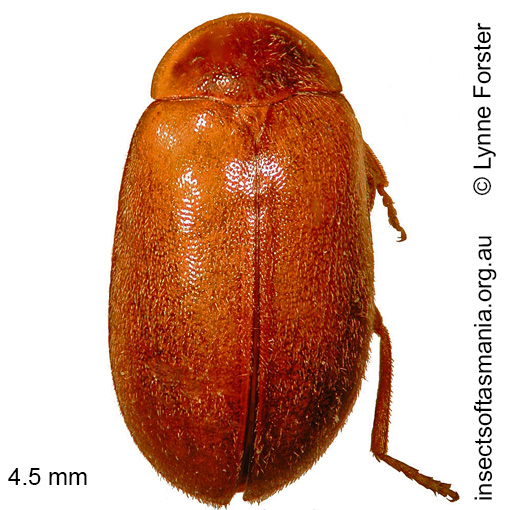
Copiacyphon uncatus (Watts, 2007) (a species of marsh-beetle)
Basis for Tasmanian occurrence
Watts, C.H.S. (2007). Revision of Australian Pseudomicrocara Armstrong (Coleoptera: Scirtidae). Transactions of the Royal Society of South Australia 131(1): 1-82. (as Pseudomicrocara uncatus)
TMAG collections
Classification
Order: Coleoptera
Suborder: Polyphaga
Superfamily: Scirtoidea
Family: Scirtidae
Morphology
Typical length (mm): 4.5
Flightedness: winged and assumed capable of flight
Source literature on morphology and taxonomy (*primary taxonomic source, where identified):
*Watts, C.H.S. (2007). Revision of Australian Pseudomicrocara Armstrong (Coleoptera: Scirtidae). Trans. Roy. Soc. S. Aust. 131 (1): 1-82.
Watts, C.H.S, Bradford, T.M., Cooper, S.J.B & Libonatti, T.M. (2020). New genera, species and combinations in the Pseudomicrocara Armstrong group (Coleoptera: Scirtidae) based on morphology supported by mitochondrial and nuclear gene sequence data. Zootaxa 4831: 1 -66.
Ecology
Assumed larval feeding: detritivore
Association with dead wood or old trees: not saproxylic
Ecological attributes: — Affiliated with bark on non-wounded trees (Harrison, 2007).
Collection method(s) for TMAG material: — Baited trapping (funnel trap) — Hand collection (substrate not specified) — Malaise trapping — Pitfall trapping — Sticky trapping on Eucalyptus obliqua — Vane trapping.
Source ecological literature:
Grove, S.J. (2009b). Beetles and fuelwood harvesting: a retrospective study from Tasmania’s southern forests. Tasforests 18: 77-99.
Baker, S.C. (2006b). Ecology and conservation of ground-dwelling beetles in managed wet eucalypt forest: edge and riparian effects. PhD thesis, Univ. of Tasmania, Hobart.
Harrison, K.S. (2007). Saproxylic beetles associated with habitat features in Eucalyptus obliqua trees in the southern forests of Tasmania. PhD thesis, Dept. of Zoology, Univ. of Tasmania, Hobart.

